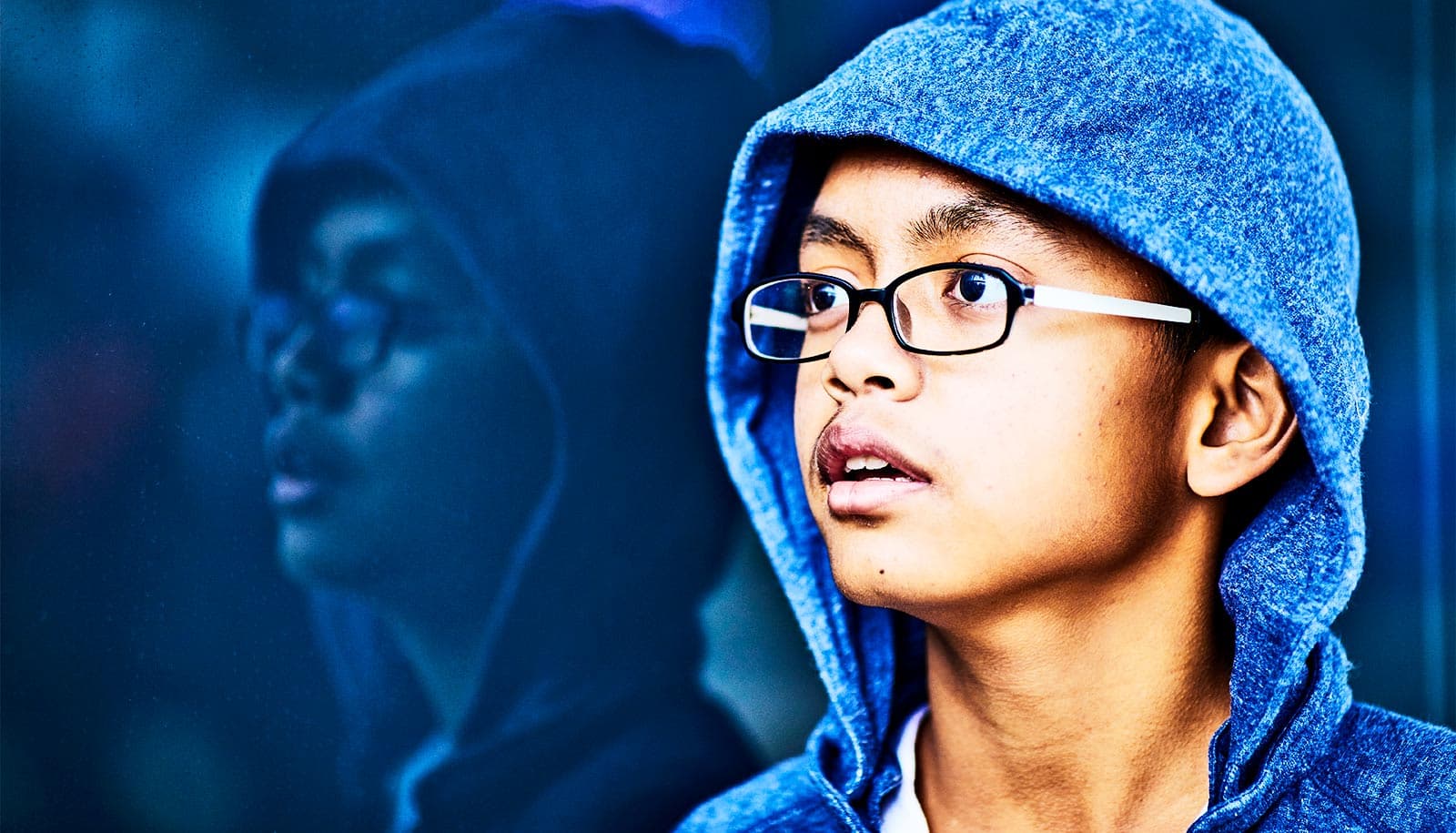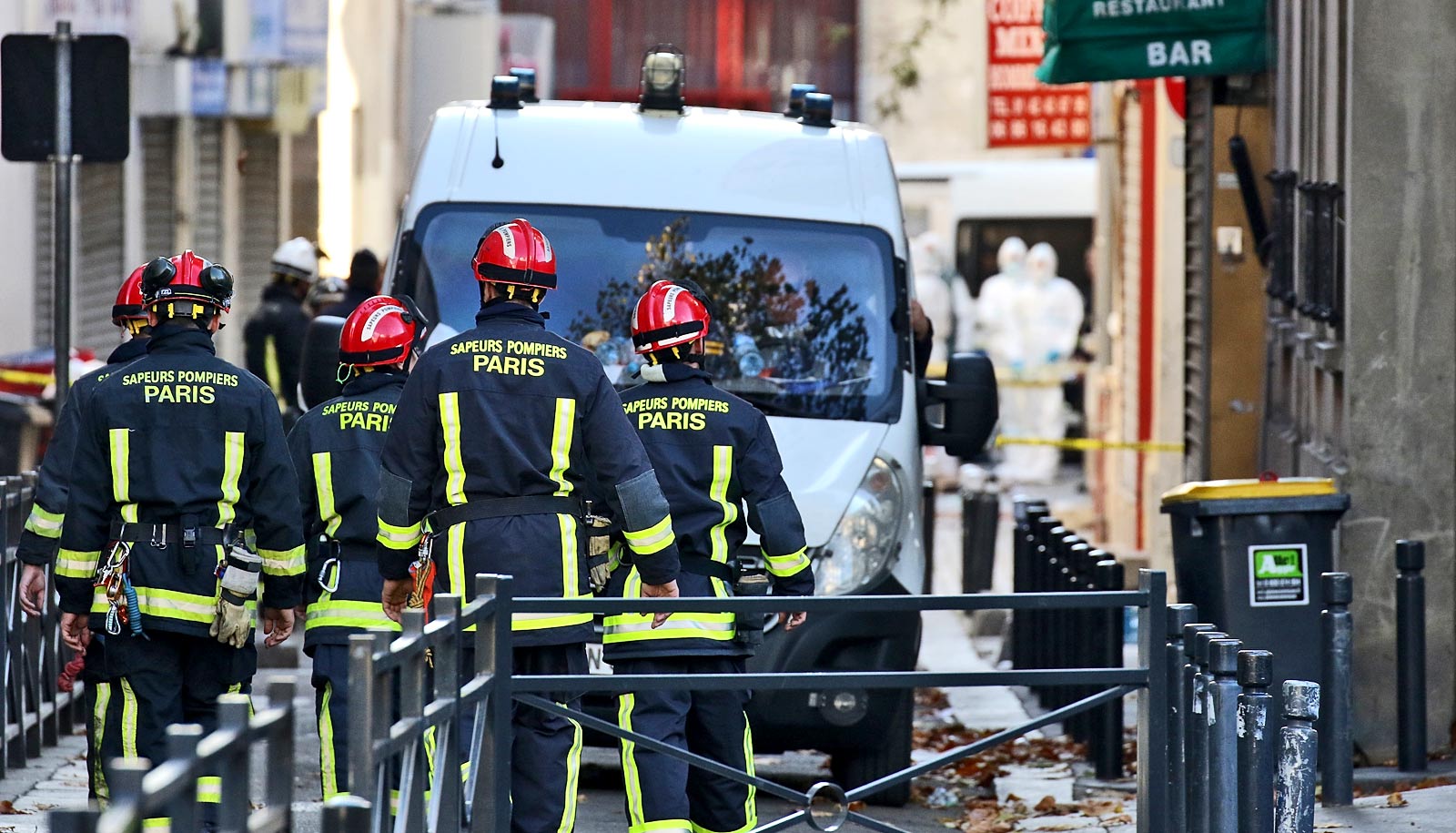Among young people associated with gangs on Chicago’s South Side, online confrontations don’t typically escalate to in-person violence and can even deter it, research finds.
The menacing photos that Tevin, a young man affiliated with a Chicago street gang, posted on social media were dramatically different from the 20-year-old whom Stanford University sociologist Forrest Stuart got to know.
Several posts show Tevin posing with a large pistol. But as Stuart knew, there was a disingenuous story behind the posts. Tevin didn’t own a gun. The pistol Tevin brandished was borrowed and he didn’t plan to use it—except for posing with it for a series of photos, he told Stuart.
Stories like Tevin’s—whose full name, like others, Stuart disguises to protect him from harm—were some of the many reports about fabricated displays of bravado that he documented during an in-depth, qualitative field work project researching how gang-associated youth use social media in gang conflict. His findings appear in the journal Social Problems.
On- and offline
Through his role as the director of an afterschool youth violence prevention program on Chicago’s South Side, Stuart recruited 60 young men affiliated with five different gang factions for an in-depth study about urban gang violence in the digital age.
For two years, he spent 20 to 50 hours a week conducting direct observations with these young men. In addition, he conducted in-depth interviews where he asked participants to review each day’s social media activity with him. During these debriefing sessions, Stuart asked about the origins, intent, meaning, and consequences of their aggressive posts so he could better understand how their online activity compared with their offline behavior.
Avoiding violence
With this level of on-the-ground immersion, Stuart was able to observe what is not immediately apparent to external audiences—including the Chicago Police Department and the FBI, who are adding people to gang databases based solely on their social media activity. What they fail to realize is that some threats they see online are empty, Stuart says.
“These young men have developed creative strategies to appear more violent, ruthless, or menacing than they actually are.”
“Contrary to common belief, the majority of social media challenges remain confined to online space and do not generate offline violence,” says Stuart, an associate professor of sociology in the Stanford School of Humanities and Sciences.
In some cases, aggressive posts on social media are an attempt to avoid violence, not instigate it, Stuart says. For example, if Tevin could make it seem he had a gun for longer than he did—Tevin uploaded the images of himself with the borrowed pistol over the course of a week—then maybe he could protect himself for a few more days, Stuart says.
“Sometimes that gun a young man posts on social media is actually a part of his attempt to not use that gun. If he can convince everybody at his school, for instance, that he is well armed and well backed by a gang, then maybe he can walk home safer. Maybe somebody will think twice about challenging him.”
Creative exaggeration
While violence is a real issue among gangs on Chicago’s South Side, “it is impossible to infer the violent outcomes of a particular piece of social media content without adequately considering the social meanings of that content for the parties involved,” Stuart says. “These young men have developed creative strategies to appear more violent, ruthless, or menacing than they actually are.”
With online hyperbole so ubiquitous, gang-affiliated youth realize that if they are exaggerating their violent behavior, their rivals were likely doing the same, Stuart says. Thus, they may go to great lengths to expose their opponents’ fabrications.
“They are fighting each other not over territory but over who can prove to be the most authentic person,” Stuart says. “On social media, they use all these different ways to challenge the authenticity of somebody else. They’re trying to show the public that their rival isn’t nearly as hard as he claims he is.”
For example, one of the most prevalent strategies Stuart found was called “cross referencing.” Challengers would find compromising photos of their target that revealed hypocrisy or embellishment. These would be disseminated over their social media channels, often with comical captions overlaid over the images. Another ploy Stuart learned about involved calling their rivals’ bluff. Young men dared their rivals to attempt drive-by shootings, and if they did not accept the challenge, their unwillingness to engage in violence would be publicized.
‘Catching lacking’
While a majority of the social media challenges that Stuart observed did not lead to physical violence, some posts did exacerbate conflict through the tactic “catching lacking.”
A target would be confronted in a setting separate from his gang-affiliated persona, at school, at work, or running errands with family, for example. Challengers would take advantage of these vulnerable moments to insult or physically injure their rival—all while capturing it on camera to upload on social media.
While “catching lacking” was more likely to catalyze violence than the other two strategies that Stuart observed, he says it is still important to not overly determine social media’s role in criminal behavior.
When authorities get it backwards
As law enforcement officials increasingly turn to social media for insight into gang violence, they must view these posts in context, Stuart says, noting that displaying violence on social media is very different from engaging in violence on the street.
For example, one of the young men Stuart studied, Junior, had his probation lengthened because of a series of aggressive social media posts with a rival gang. The reason for the posts, Junior told Stuart, was to ward off attacks that might jeopardize his attempt, in his own words, to “get right.”
“In Junior’s case, court personnel not only overestimated the relationship between his aggressive posts and his desire to engage in offline violence—they inverted this relationship,” Stuart writes in the paper.
Stuart’s qualitative study is part of a larger research project about the social organization of gangs, gang violence, and poor urban neighborhoods in the digital age. These findings will be part of Stuart’s book, tentatively titled Ballad of the Bullet: Gangs, Violence, and Urban Culture in the Social Media Age, due out next year.
Source: Stanford University



